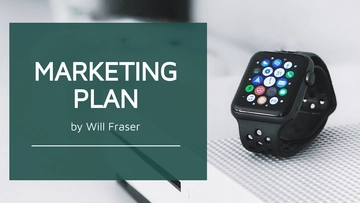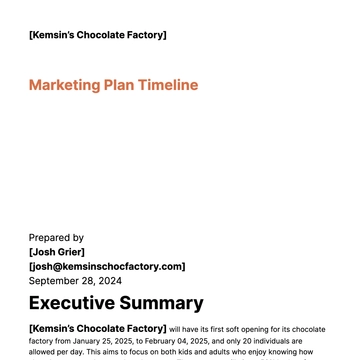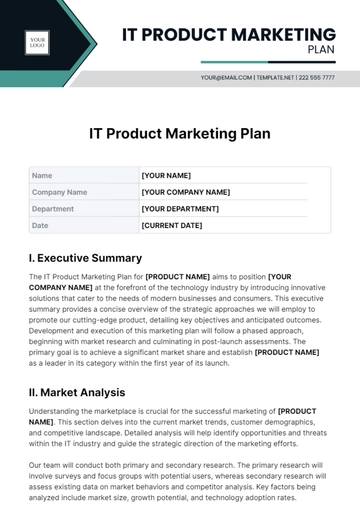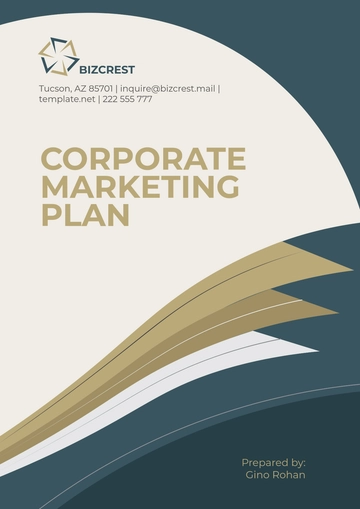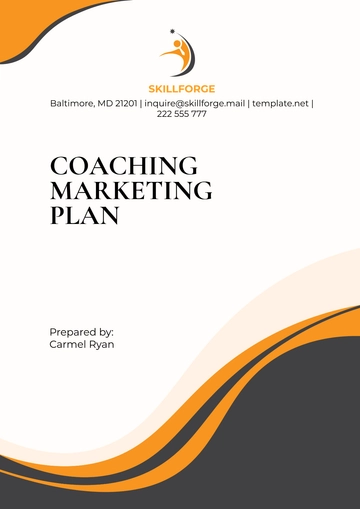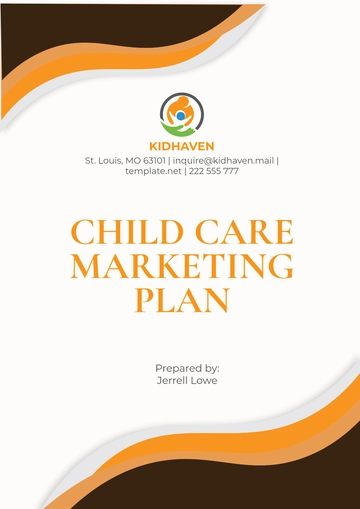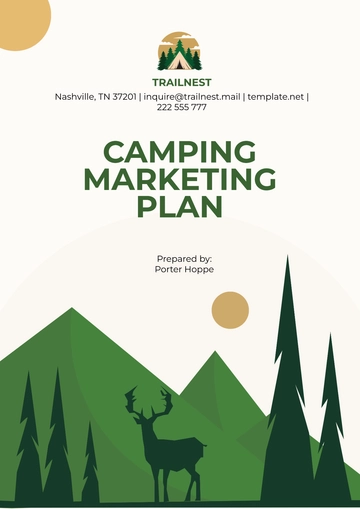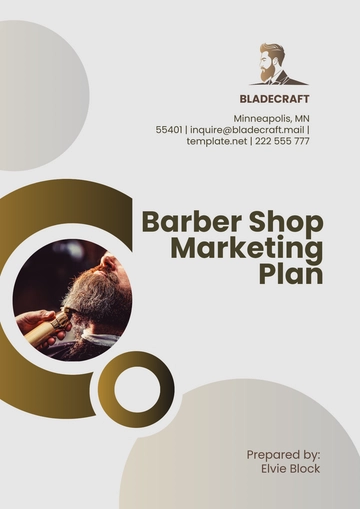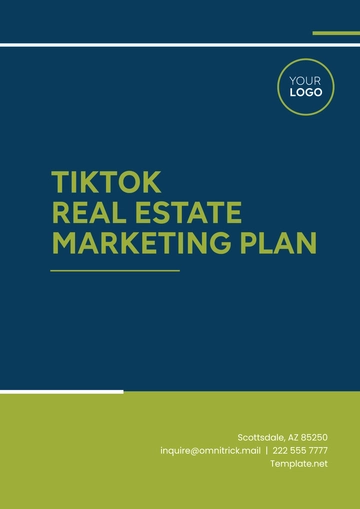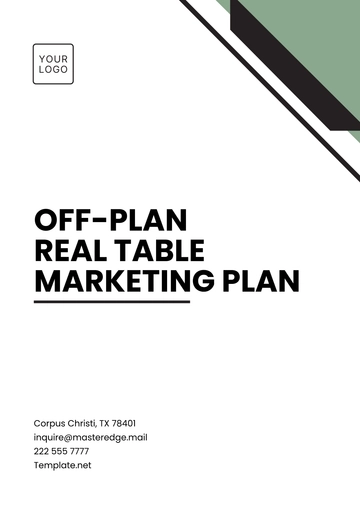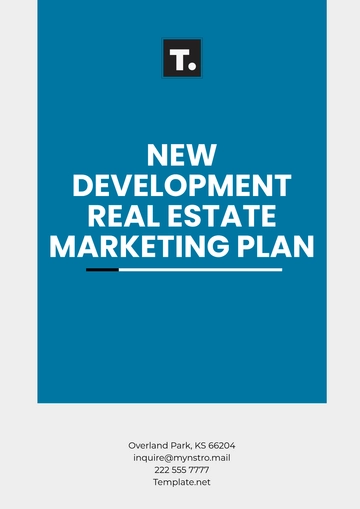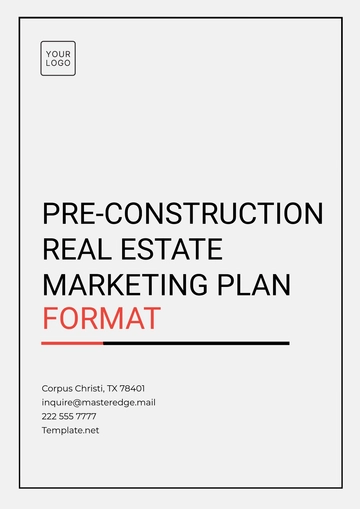Free Food Delivery Marketing Plan
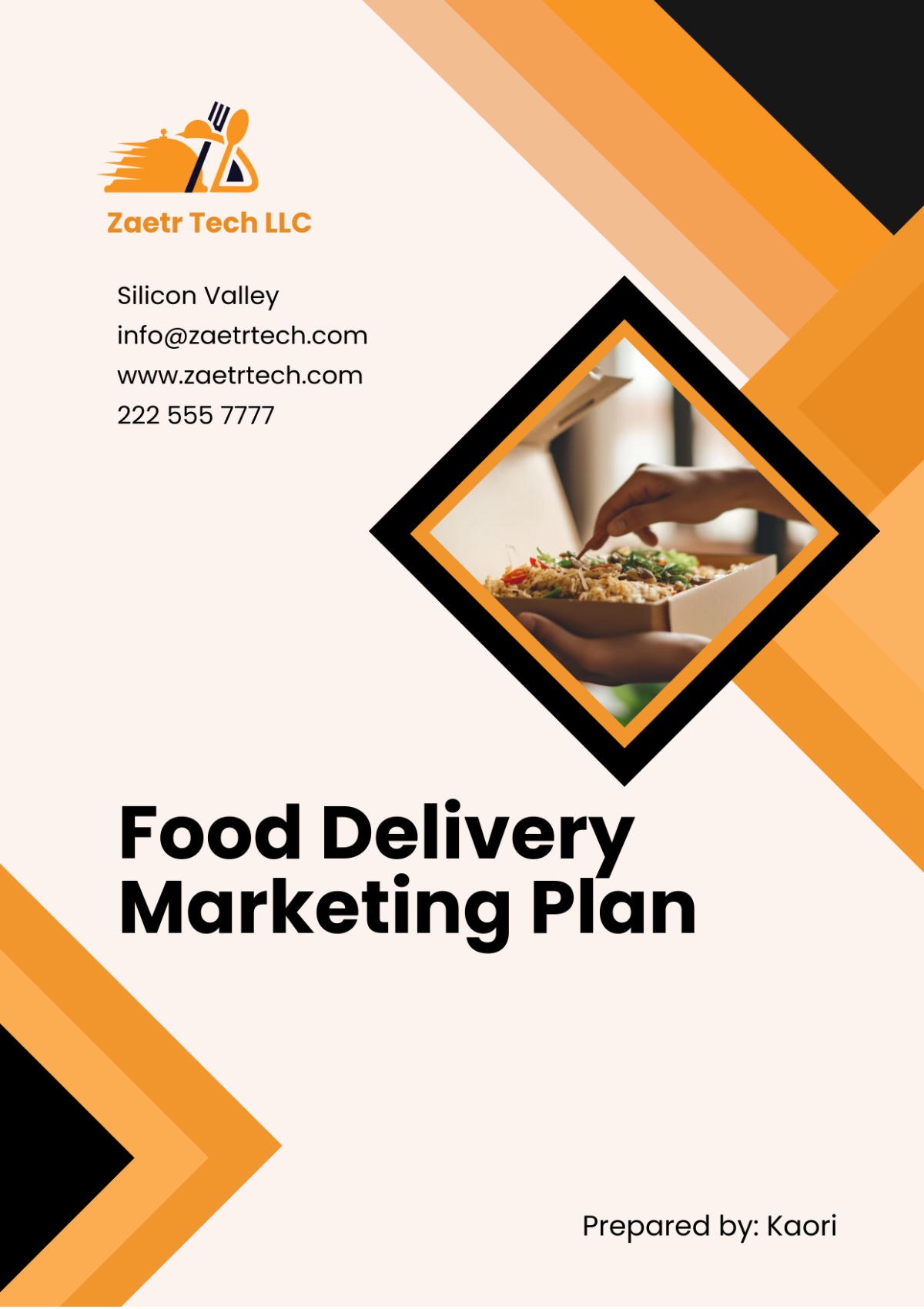
I. Executive Summary
The Food Delivery industry has evolved significantly over the past decade, with exponential growth driven by urbanization, the rise of digital platforms, and a shift in consumer preferences towards convenience. As we look ahead to the year 2050 and beyond, the demand for food delivery services is expected to skyrocket, particularly in urban areas where time constraints and busy lifestyles continue to define consumer behavior. According to industry reports, the convenience of food delivery services has become a staple in many households, especially in metropolitan regions, where fast-paced living often leaves little time for meal preparation.
[Your Company Name] is poised to capture this expanding market by providing a user-friendly, efficient, and reliable food delivery service. Our marketing plan will outline a detailed approach to reaching our target audience, building brand awareness, and maintaining long-term customer loyalty. This plan will also emphasize the integration of advanced technologies like Artificial Intelligence (AI) and Machine Learning (ML) to improve delivery efficiency. By leveraging these technologies, we can optimize delivery routes, reduce waiting times, and enhance customer satisfaction. Furthermore, we will utilize data analytics to tailor marketing campaigns to individual preferences, thereby increasing engagement and sales.
II. Market Analysis
A. Industry Overview
The global food delivery market has experienced rapid growth in recent years. In [2050], the market is projected to reach a value of [$500 billion], with a compound annual growth rate (CAGR) of [8%] between [2050] and [2060]. Factors such as an increase in dual-income households, changing work patterns, and the expansion of digital infrastructure have fueled this growth. The proliferation of smartphones and the rise of food delivery apps are additional drivers that have made ordering food more accessible than ever before. As people increasingly rely on technology for their daily needs, the food delivery sector has become an essential service, reshaping how consumers approach dining.
To remain competitive, [Your Company Name] must focus on:
Adapting to Technological Trends: The integration of cutting-edge technology will not only streamline operations but also enhance the customer experience. Implementing AI to optimize delivery routes can reduce delivery times by up to [15%], providing a significant advantage over competitors.
Sustainability Initiatives: In an era where consumers are more environmentally conscious, reducing carbon footprints by implementing eco-friendly packaging and promoting carbon-neutral deliveries will appeal to a growing demographic that values sustainability.
Personalized Customer Experience: Leveraging data-driven insights allows us to customize menu recommendations based on user behavior, ensuring that we meet the diverse tastes and preferences of our customers. This level of personalization fosters customer loyalty, as users feel that their individual needs are being recognized and catered to.
B. Market Segmentation
Our target market for food delivery can be segmented into the following categories:
Segment | Description | % of Market Share | Key Characteristics |
|---|---|---|---|
Urban Millennials | Busy professionals aged [25-40] living in metropolitan areas. High reliance on food delivery services for convenience. | [45%] | Tech-savvy, value fast and reliable service, prefer sustainable options, and are influenced by social media trends. |
Students | University and college students living on or near campus, seeking affordable and quick meal solutions. | [20%] | Price-sensitive, highly influenced by promotional offers, and prefer delivery options that fit into their busy schedules. |
Families | Dual-income families with children, often seeking meal solutions that cater to multiple tastes. | [25%] | Prefer bulk meals, looking for variety and nutritional options that can please both adults and children. |
Corporate Clients | Offices and corporate clients ordering meals for meetings and events. | [10%] | Regular, large orders, focus on punctuality and professionalism, often requiring catering for special events or large gatherings. |
By understanding these segments, [Your Company Name] can develop targeted marketing strategies that resonate with each group, ensuring maximum engagement and conversion rates.
III. Competitive Analysis
A. Key Competitors
The food delivery market is highly competitive, with several dominant players already established. Below is a brief analysis of our top competitors:
Competitor Name | Market Share (%) | Strengths | Weaknesses |
|---|---|---|---|
Competitor 1 | [30%] | Nationwide presence, fast delivery times, wide variety of restaurant options, and extensive advertising budgets. | High delivery fees, limited customer service support, and occasional quality control issues. |
Competitor 2 | [25%] | Low prices, extensive partnerships with local restaurants, and a strong focus on budget-friendly offerings. | Limited service area, slow expansion rate, and occasional delays during peak hours. |
Competitor 3 | [15%] | Sustainable delivery practices, eco-friendly packaging, and a strong community presence through local partnerships. | Higher prices compared to competitors, limited menu options, and dependence on select partnerships. |
B. Competitive Advantage of [Your Company Name]
[Your Company Name] stands out in the crowded market with a unique set of competitive advantages:
Technological Integration: Advanced AI-based route optimization can reduce delivery times significantly, allowing us to promise faster delivery than our competitors.
Sustainability Focus: Our commitment to eco-friendly practices, including biodegradable packaging and a carbon-neutral delivery fleet, positions us favorably with environmentally-conscious consumers. This initiative not only enhances our brand image but also attracts customers who prioritize sustainability in their purchasing decisions.
Partnerships with High-End Restaurants: Offering exclusive delivery from premium restaurants that competitors lack access to allows us to differentiate our offerings. By providing customers with gourmet options that are unavailable through other services, we can attract a clientele willing to pay a premium for quality.
IV. Marketing Objectives
Our marketing objectives are designed to support the business growth strategy and target the key market segments identified in the analysis. By achieving these objectives, we aim to establish a strong market presence and build a loyal customer base.
A. Increase Brand Awareness
Objective: Increase brand awareness by [25%] by the end of [2052]. This will be measured through customer surveys and social media engagement metrics.
Strategy: Launch targeted digital marketing campaigns, including social media advertising and influencer partnerships, to raise awareness among urban millennials and families. Engaging content that resonates with our target audience will be essential in reaching this goal.
B. Expand Customer Base
Objective: Expand the customer base by [30%] in the first year of operation, aiming for substantial growth in key demographic segments.
Strategy: Offer promotions, such as free deliveries and discounts for first-time users, while leveraging referral programs to encourage word-of-mouth marketing. This dual approach not only attracts new customers but also incentivizes existing ones to promote our services to their social circles.
C. Increase Retention Rates
Objective: Increase customer retention rates by [15%] by [2053].
Strategy: Implement a loyalty program that rewards frequent users with discounts, special deals, and exclusive restaurant partnerships. By enhancing the value proposition for returning customers, we can encourage repeat business and foster long-term loyalty.
V. Marketing Strategy
A. Product Strategy
[Your Company Name] will focus on offering a diverse range of food options, including partnerships with both local eateries and well-established chains. We will highlight specific niches, such as:
Health-conscious Options: Menus that include vegan, gluten-free, and organic meals will cater to the growing trend of health-conscious dining. By working with nutritionists to curate our offerings, we can appeal to customers seeking healthier meal choices.
Family Meal Packs: Convenient meal bundles for larger households or groups will simplify the ordering process for families. These packs will feature a variety of dishes to satisfy diverse tastes and encourage shared meals, promoting family bonding over dining.
Premium Dining: Partnering with high-end restaurants to offer exclusive gourmet delivery options will attract food enthusiasts and those looking to celebrate special occasions. Our curated selections from top chefs can elevate the dining experience and position our brand as a premium service.
B. Price Strategy
The pricing strategy will focus on maintaining a balance between competitive pricing and profitability. [Your Company Name] will implement the following pricing models:
Dynamic Pricing: Adjust prices based on demand, offering lower prices during off-peak times to encourage orders. This approach allows us to optimize revenue while catering to price-sensitive consumers during quieter periods.
Subscription Model: Introduce a subscription plan that offers unlimited deliveries for a fixed monthly fee, appealing to frequent users. This model not only generates steady revenue but also encourages customer loyalty by providing consistent value.
C. Promotion Strategy
Promotions will be key to driving both short-term sales and long-term customer loyalty. Our promotion strategy includes:
Digital Advertising Campaigns: Utilize platforms like Google Ads, Facebook, and Instagram to target specific customer segments. For instance, students can be targeted with special deals around exam time, while professionals can receive workday meal discounts. Tailoring ads to specific demographics will increase relevance and conversion rates.
Influencer Partnerships: Collaborate with influencers, particularly food bloggers and Instagram personalities, to promote our services. These partnerships will build trust and increase our visibility to key market segments. By leveraging influencers with significant followings in our target demographics, we can effectively reach potential customers in an organic manner.
Loyalty Program: Launch the "Foodie Rewards" program, where customers earn points with each purchase that can be redeemed for discounts or exclusive meals. This program will encourage repeat business and enhance customer satisfaction by rewarding their loyalty.
D. Place Strategy
To effectively reach our target audience, our distribution strategy will focus on urban areas with high demand for food delivery services. Key aspects include:
Optimized Delivery Zones: Identify and focus on metropolitan areas with a dense population and a high concentration of our target market. By prioritizing these areas, we can streamline operations and enhance delivery efficiency.
Partnerships with Local Restaurants: Collaborate with both popular and hidden gem restaurants to provide a diverse range of menu options that cater to various tastes. These partnerships will not only expand our offerings but also support local businesses, strengthening our community ties and appealing to customers who value local cuisine.
VI. Sales Forecast
A. Revenue Projections
Based on market analysis and projected growth, the sales forecast for [Your Company Name] over the next three years is as follows:
Year | Projected Revenue ($) | Projected Expenses ($) | Net Profit ($) |
|---|---|---|---|
[2050] | [$5,000,000] | [$3,500,000] | [$1,500,000] |
[2051] | [$10,000,000] | [$6,500,000] | [$3,500,000] |
[2052] | [$18,000,000] | [$10,000,000] | [$8,000,000] |
This forecast is based on assumptions regarding market growth, customer acquisition, and operational efficiency. Achieving our marketing objectives and executing our strategies effectively will be crucial to meeting these projections.
B. Customer Acquisition Cost (CAC)
Understanding our CAC will help us allocate our marketing budget effectively. The projected CAC is as follows:
Year [2050]: [$30] per customer.
Year [2051]: [$25] per customer.
Year [2052]: [$20] per customer.
By implementing targeted marketing strategies and optimizing our customer acquisition processes, we aim to reduce the CAC while increasing customer retention rates.
VII. Financial Plan
A. Startup Costs
To launch [Your Company Name], we estimate the initial startup costs will be as follows:
Item | Cost ($) |
|---|---|
Technology Development | [$1,000,000] |
Marketing and Promotions | [$500,000] |
Office and Operational Setup | [$200,000] |
Hiring Staff | [$300,000] |
Miscellaneous Expenses | [$100,000] |
Total | [$2,100,000] |
These startup costs will be funded through a combination of investor capital and potential small business loans. A detailed financial plan will ensure that funds are allocated efficiently and that the business remains solvent during the critical launch phase.
B. Funding Requirements
To support our initial operations and marketing efforts, [Your Company Name] is seeking [$2,500,000] in funding. This funding will cover startup costs, operational expenses for the first [6] months, and working capital for marketing initiatives. Our goal is to achieve profitability within [2] years, and we anticipate reaching our break-even point by the end of [2051].
C. Financial Projections
Our long-term financial projections indicate strong growth potential. The following table summarizes our projected revenues, expenses, and net profits over the next [five] years:
Year | Projected Revenue ($) | Projected Expenses ($) | Net Profit ($) |
|---|---|---|---|
[2050] | [$5,000,000] | [$3,500,000] | [$1,500,000] |
[2051] | [$10,000,000] | [$6,500,000] | [$3,500,000] |
[2052] | [$18,000,000] | [$10,000,000] | [$8,000,000] |
[2053] | [$30,000,000] | [$15,000,000] | [$15,000,000] |
[2054] | [$50,000,000] | [$25,000,000] | [$25,000,000] |
These projections are based on anticipated market growth, customer acquisition strategies, and operational efficiencies that will improve over time as our brand establishes itself.
VIII. Implementation Plan
A. Timeline
The implementation of this marketing plan will follow a phased approach that allows for gradual expansion and optimization:
Phase | Activity | Timeframe |
|---|---|---|
Phase 1 | Launch website and app, initiate social media campaigns. | [Q1 2050] |
Phase 2 | Expand into additional cities, introduce the loyalty program. | [Q3 2050] |
Phase 3 | Launch subscription model, establish ghost kitchen partnerships. | [Q2 2051] |
Phase 4 | Analyze performance metrics, refine marketing strategies based on data-driven insights. | [Q4 2051] |
Phase 5 | Continue expanding service areas and partnerships with more restaurants, increasing offerings based on customer feedback. | [Q1 2052] |
B. Key Performance Indicators (KPIs)
To measure the success of our marketing efforts, the following KPIs will be tracked:
Customer Acquisition Cost (CAC): Monitor the cost associated with acquiring each new customer, ensuring that it aligns with our budgetary constraints and projected growth.
Customer Lifetime Value (CLV): Measure the average revenue generated from each customer throughout their engagement with [Your Company Name], aiming to increase this figure over time through retention strategies.
Delivery Time: Track the average delivery time and aim to reduce it by [10%] annually. By consistently improving our delivery times, we can enhance customer satisfaction and loyalty.
Retention Rate: Monitor the percentage of customers who continue to use our services after their initial purchase, with a goal of increasing this metric by [15%] by [2053].
Engagement Metrics: Analyze social media engagement, including likes, shares, and comments, as well as website traffic and app downloads, to gauge the effectiveness of our marketing campaigns.
IX. Conclusion
By leveraging a comprehensive marketing strategy that combines cutting-edge technology, targeted digital campaigns, and customer-centric service, [Your Company Name] is well-positioned to dominate the food delivery market by the year [2050]. We recognize the importance of staying agile and responsive to market trends, and through continuous adaptation and the use of data-driven insights, we aim to create a seamless, satisfying experience for customers.
This marketing plan not only serves as a roadmap for our business's growth but also establishes [Your Company Name] as a forward-thinking leader in the food delivery industry. Our commitment to sustainability, customer satisfaction, and innovation will drive long-term growth and profitability, ensuring that we remain a preferred choice for consumers seeking convenient, high-quality meal delivery options. With a strong emphasis on data analytics and customer feedback, we will refine our strategies and adapt to evolving consumer preferences, thereby securing our position as an industry leader well into the future.
- 100% Customizable, free editor
- Access 1 Million+ Templates, photo’s & graphics
- Download or share as a template
- Click and replace photos, graphics, text, backgrounds
- Resize, crop, AI write & more
- Access advanced editor
Boost your visibility with the Food Delivery Marketing Plan Template from Template.net. This editable and customizable template helps you outline marketing strategies, target audience, and promotional activities to drive orders. Use our Ai Editor Tool to adapt it to your specific goals, ensuring a successful launch and sustained growth.
